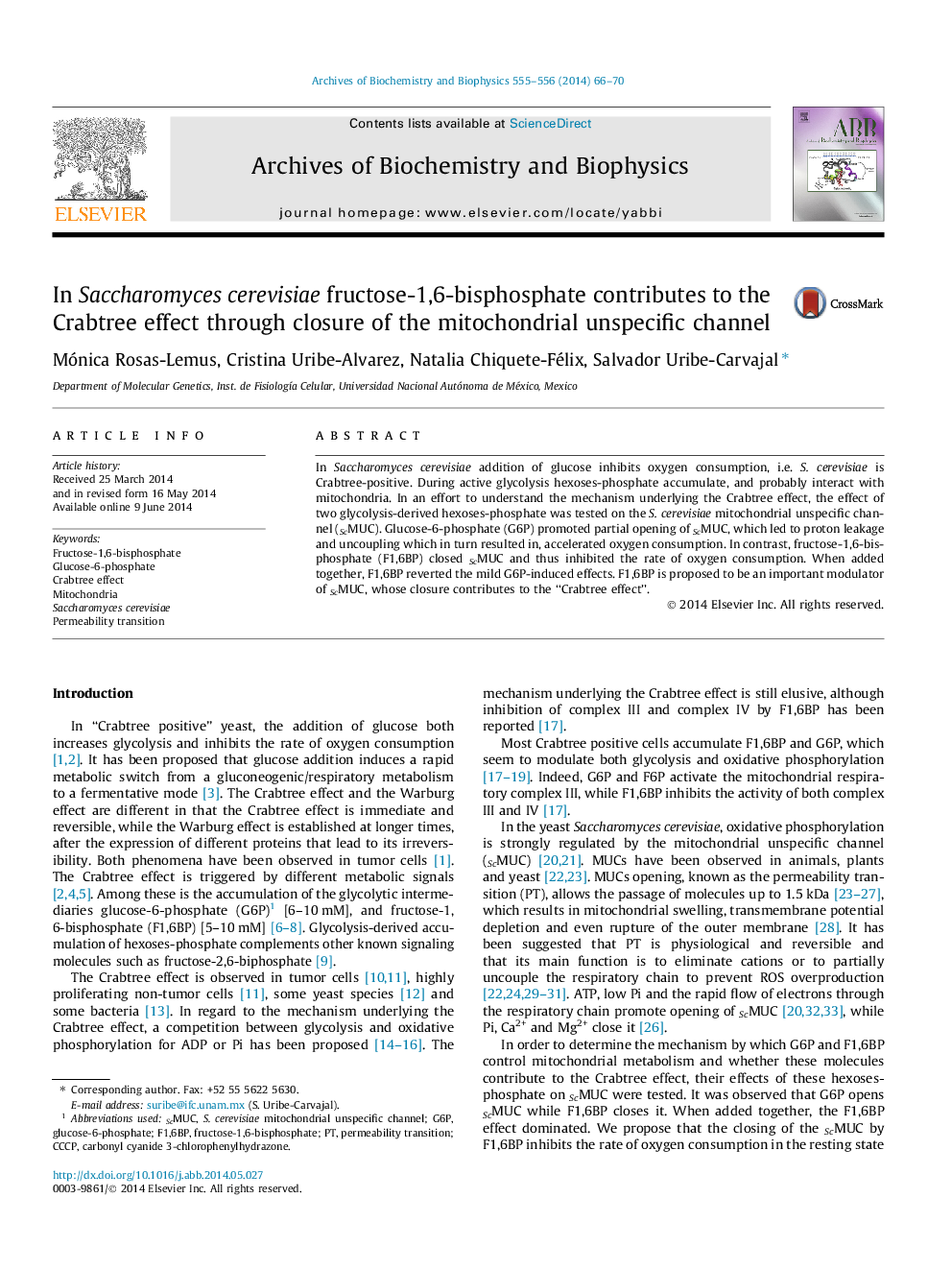| کد مقاله | کد نشریه | سال انتشار | مقاله انگلیسی | نسخه تمام متن |
|---|---|---|---|---|
| 1925147 | 1536346 | 2014 | 5 صفحه PDF | دانلود رایگان |

• In S. cerevisiae F1,6BP promotes closure of ScMUC.
• A closed ScMUC enhances the mitochondrial membrane impermeability to protons.
• The effect of F1,6BP on ScMUC contributes to the Crabtree effect.
In Saccharomyces cerevisiae addition of glucose inhibits oxygen consumption, i.e. S. cerevisiae is Crabtree-positive. During active glycolysis hexoses-phosphate accumulate, and probably interact with mitochondria. In an effort to understand the mechanism underlying the Crabtree effect, the effect of two glycolysis-derived hexoses-phosphate was tested on the S. cerevisiae mitochondrial unspecific channel (ScMUC). Glucose-6-phosphate (G6P) promoted partial opening of ScMUC, which led to proton leakage and uncoupling which in turn resulted in, accelerated oxygen consumption. In contrast, fructose-1,6-bisphosphate (F1,6BP) closed ScMUC and thus inhibited the rate of oxygen consumption. When added together, F1,6BP reverted the mild G6P-induced effects. F1,6BP is proposed to be an important modulator of ScMUC, whose closure contributes to the “Crabtree effect”.
Figure optionsDownload high-quality image (36 K)Download as PowerPoint slide
Journal: Archives of Biochemistry and Biophysics - Volumes 555–556, August 2014, Pages 66–70